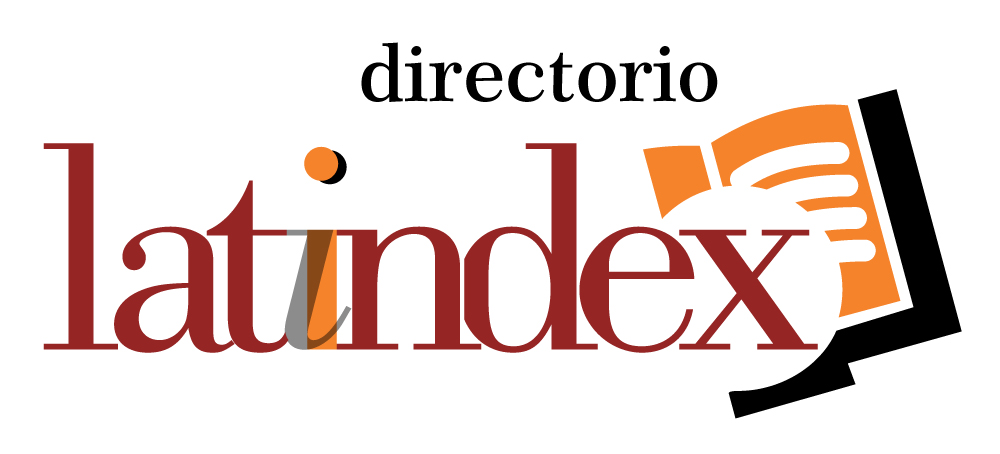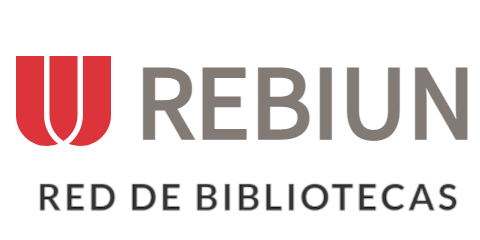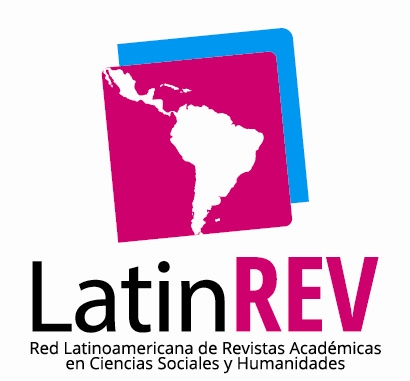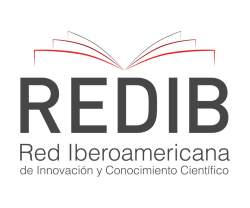15 años de Investigación sobre la Enseñanza de Vocabulario en Inglés a Niños: Una Revisión Basada en Scopus
Resumen
El aprendizaje de vocabulario en las primeras etapas de la educación en inglés como lengua extranjera (EFL) es fundamental, ya que influye en el desempeño y éxito futuro de los estudiantes. Como resultado, los docentes de niños tienen una gran responsabilidad en la enseñanza efectiva del vocabulario. Sin embargo, los programas de formación inicial en EFL suelen no abordar este aspecto de manera adecuada, lo que genera una capacitación limitada. Además, en muchos países, los docentes de educación primaria no poseen títulos específicos en enseñanza del inglés, lo que conlleva una instrucción poco estructurada en EFL. La presente revisión de literatura tiene como objetivo abordar este problema mediante el análisis de sesenta documentos extraídos de la base de datos Scopus, publicados entre 2010 y 2024, y presentar los hallazgos y conclusiones más relevantes. Se identificaron y discutieron temas clave como la enseñanza del vocabulario a través de la tecnología, la lectura, la música, los juegos y el enfoque TPR, así como la instrucción explícita, el uso de la L1 y el papel del docente, entre otros. Asimismo, se presentaron infografías que resumen los hallazgos generales. El artículo concluye con reflexiones finales y sugerencias para futuras líneas de investigación. Este estudio representa una fuente valiosa tanto para los docentes, quienes pueden utilizarlo como guía en sus prácticas en el aula, como para los investigadores, quienes pueden explorar nuevas posibilidades de estudio en este ámbito.
Descargas
Citas
https://doi.org/10.1016/j.sbspro.2011.11.275
Al-Smadi, M. H. (2020). The Effect of Using Songs on Young English Learners’ Motivation in Jordan. International Journal of Emerging Technologies in Learning (iJET), 15(24), 52–63.
https://doi.org/10.3991/ijet.v15i24.19311
Alvarez, C., & Downer, J. (2024). Teachers’ use of Spanish in the classroom: Implications for Hispanic dual language learners’ classroom engagement. Early Education and Development, 35(6), 1156–1175. https://doi.org/10.1080/10409289.2023.2204293
Arikan, A., & Ulaş Taraf, H. (2010). Contextualizing young learners’ English lessons with cartoons: Focus on grammar and vocabulary. Procedia - Social and Behavioral Sciences, 2(2), 5212-5215. 2nd World Conference on Educational Sciences.
https://doi.org/10.1016/j.sbspro.2010.03.848.
Astutik, Y., Megawati, F., & Aulina, C.N. (2019). Total physical response (TPR): How is it used to Teach EFL Young Learners? International Journal of Learning. Teaching and Educational Research, 18(1), 92-103. https://doi.org/10.26803/ijlter.18.1.7
Baas, J., Schotten, M., Plume, A., Côté G., Karimi, R. (2020). Scopus as a curated, high-quality bibliometric data source for academic research in quantitative science studies. Quantitative Science Studies 2020, 1(1): 377–386. https://doi.org/10.1162/qss_a_00019
Bedilu, W.B., & Degefu, H.W. (2023). Exploring EFL teachers’ perceptions and classroom practices in teaching vocabulary to children: the case of lower grade English teachers in Ethiopia. Education, 3-13. https://doi.org/10.1080/03004279.2023.2205435
Chan, M., Buttiler, M. B., Yang, F., Yang, J., Uchikoshi, Y., & Zhou, Q. (2022). Teachers’ Language Use in Multilingual Head Start Classrooms: Implications for Dual Language Learners. Children, 9(12), 1871. https://doi.org/10.3390/children9121871
Chen, I. S. J. (2020). Music as a Mnemonic Device for Foreign Vocabulary Learning. English Teaching and Learning, 44(4), 377-395. https://doi.org/10.1007/s42321-020-00049-z
Chow, B. W.-Y., Hui, A. N.-N., Li, Z., & Dong, Y. (2023). Dialogic teaching in English-as-a-second-language classroom: Its effects on first graders with different levels of vocabulary knowledge. Language Teaching Research, 27(6), 1408-1430. https://doi.org/10.1177/1362168820981399
Çimen, B.A., & Çeşme, H. (2022). Effect of TPR and CLT on young EFL learners’ speaking anxiety, oral proficiency, and vocabulary learning. Electronic Journal of Foreign Language Teaching, 19(2), 163-176. https://doi.org/10.56040/akce1924
Correa, D., & González, A. (2009). English in public primary schools in Colombia: Achievements and challenges brought about by national language education policies. Education Policy Analysis Archives, 24(83). http://dx.doi.org/10.14507/epaa.24.2459
Coyle, Y., & Gómez Gracia, R. (2014). Using songs to enhance L2 vocabulary acquisition in preschool children. ELT Journal, 68(3), 276-285. https://doi.org/10.1093/elt/ccu015
Coyle, Y., & Reverte, M. J. (2017). Children’s interaction and lexical acquisition in text-based online chat. Language Learning & Technology, 21(2), 179–199. https://dx.doi.org/10125/44617
Damara, D., Pertiwi, R.S., Salabiyati, I., & Akmal. (2019). The advantages of water painting activity in teaching English vocabulary for children. International Journal of Scientific and Technology Research, 8(12), 2840-2844. https://ijstr.org/final-print/dec2019/The-Advantages-Of-Water-Painting-Activity-In-Teaching-English-Vocabulary-For-Children.pdf
Damkliang, K., Wutthisamai, S., & Jirasinchanarat, P. (2016). Guessing English vocabularies: A game application for children on multiple mobile platforms. 2016 8th International Conference on Knowledge and Smart Technology.
De Mejia, A.M. (2009). Teaching English to Young Learners in Colombia: Policy, Practice and Challenges. MEXTESOL Journal, 33(1). 103-114.
https://mextesol.net/journal/public/files/608a36b5561679ae49d49e19c4d60750.pdf
Deacon, S.H., Mimeau, C., Chung, S.C., & Chen, X. (2019). Young readers’ skill in learning spellings and meanings of words during independent reading. Journal of Experimental Child Psychology, 181, 56-74. https://doi.org/10.1016/j.jecp.2018.12.007
Demircioğlu, Şerife. (2010). Teaching English vocabulary to young learners via drama. Procedia - Social and Behavioral Sciences, 2, 439-443. 2nd World Conference on Educational Sciences.
https://doi.org/10.1016/j.sbspro.2010.03.039.
Dixon, C., Thomson, J., & Fricke, S. (2020). Evaluation of an explicit vocabulary teaching intervention for children learning English as an additional language in primary school. Child Language Teaching and Therapy, 36(2), 91-108. https://doi.org/10.1177/0265659020925875
Enever, J., Krikhaar, E., Lindgren, E., Lopriore, L., Lundberg, G., Djugunović, J.M., Muñoz, C., Szpotowicz, M., Mestres, E.T. (2011). Early Language Learning in Europe. (J. Enever, Ed.). British Council.
https://www.teachingenglish.org.uk/sites/teacheng/files/B309%20ELLiE%20Book%202011%20FINAL.pdf
Eurostat. (2024, September). Foreign language learning statistics.
https://ec.europa.eu/eurostat/statistics-explained/index.php?title=Foreign_language_learning_statistics#Data_sources
Foster, M. E., Anthony, J. L., Clements, D. H., Sarama, J., & Williams, J. J. (2018). Hispanic dual language learning kindergarten students' response to a numeracy intervention: A randomized control trial. Early Childhood Research Quarterly, 43, 83–95.
https://doi.org/10.1016/j.ecresq.2018.01.009
Gillanders, C., Castro, D. C., & Franco, X. (2014). LEARNING WORDS FOR LIFE: Promoting Vocabulary in Dual Language Learners. The Reading teacher, 68(3), 213–221.
https://doi.org/10.1002/trtr.1291
Gomes-Koban, C., Simpson, I. C., Valle, A., & Defior, S. (2017). Oral vocabulary training program for Spanish third-graders with low socio-economic status: A randomized controlled trial. PloS one, 12(11), e0188157. https://doi.org/10.1371/journal.pone.0188157
Gutierrez Arvizu, M. (2020). L2 Vocabulary Acquisition through Narratives in an EFL Public Elementary School. IAFOR Journal of Education, 8(1), 115-127.
https://doi.org/10.22492/ije.8.1.07.
Hessel, A.K., & Murphy, V.A. (2019). Understanding how time flies and what it means to be on cloud nine: English as an Additional Language (EAL) learners' metaphor comprehension. Journal of Child Language, 46(2), 265-291. https://doi.org/10.1017/S0305000918000399
Hestetræet, T.I. (2019). Vocabulary teaching for young learners. In S. Garton & F. Copland (Eds.), The Routlege Handbook of Teaching English to Young Learners (pp. 220-233). Routledge.
Hu, C.F. (2012). Fast-Mapping and Deliberate Word-Learning by EFL Children. Modern Language Journal, 96(3), 439-453. https://eric.ed.gov/?id=EJ981157
Hui, A.N.N., Chow, B.W.-Y., Chan, E.S.M., & Leung, M.-T. (2020). The Effect of Using Songs on Young English Learners’ Motivation in Jordan. Frontiers in Psychology, 10, 2899.
https://doi.org/10.3389/fpsyg.2019.02899
Hwang, K., & Yim, S.Y. (2019). The negative influence of native-speakerism on the sustainability of linguistic and cultural diversities of localized variants of English: A study of local and expatriate teachers in South Korea. Sustainability (Switzerland), 11(23).
https://doi.org/10.3390/su11236723
Barragán Galeas, S. P., & Velasteguí Silva, D. A. (2024). La Cooperación Policial Internacional como Estrategia en la Lucha contra la Violencia, Delincuencia y Criminalidad en el Ecuador. Estudios Y Perspectivas Revista Científica Y Académica , 4(1), 1952–1978. https://doi.org/10.61384/r.c.a.v4i1.159
Bethy Margoth, & Moyano Calero, W. (2024). Factores de riesgos de contagio de tuberculosis en personas adultas. Revista Científica De Salud Y Desarrollo Humano, 5(1), 46–68. https://doi.org/10.61368/r.s.d.h.v5i1.74
Contreras Balaguera, S. F., Fonseca Valderrama, L. Y., Fonseca Valderrama, A. Y., & García Corredor, F. G. (2024). Política Espacial en el contexto Latinoamericano (Colombia, México y Chile). Emergentes - Revista Científica, 4(1), 452–466. https://doi.org/10.60112/erc.v4i1.125
Montes López, V. (2023). Socioeconomic Inequalities in Health: A Challenge for Equity. Revista Veritas De Difusão Científica, 4(1), 18–29. https://doi.org/10.61616/rvdc.v4i1.35
Martínez, O., Aranda , R., Barreto , E., Fanego , J., Fernández , A., López , J., Medina , J., Meza , M., Muñoz , D., & Urbieta , J. (2024). Los tipos de discriminación laboral en las ciudades de Capiatá y San Lorenzo. Arandu UTIC, 11(1), 77–95. Recuperado a partir de https://www.uticvirtual.edu.py/revista.ojs/index.php/revistas/article/view/179
v, H., & Quispe Coca, R. A. (2024). Tecno Bio Gas. Horizonte Académico, 4(4), 17–23. Recuperado a partir de https://horizonteacademico.org/index.php/horizonte/article/view/14
Da Silva Santos , F., & López Vargas , R. (2020). Efecto del Estrés en la Función Inmune en Pacientes con Enfermedades Autoinmunes: una Revisión de Estudios Latinoamericanos. Revista Científica De Salud Y Desarrollo Humano, 1(1), 46–59. https://doi.org/10.61368/r.s.d.h.v1i1.9
Vera Ríos, E. R., Enriquez Sarango, M. I., Sarmiento Ordinola, D. A., Valle Zambrano, J. F., & Balcázar Garzón, M. E. (2025). Impacto del Peso de la Mochila Escolar en la Postura de Estudiantes: Un Enfoque Preventivo. Ciencia Y Reflexión, 4(1), 211–232. https://doi.org/10.70747/cr.v4i1.97
Céspedes Morai, J. M. (2024). Evolución de la Industria del Turismo Sostenible en España. Ciencia Y Reflexión, 3(2), 126–144. https://doi.org/10.70747/cr.v3i2.11
Jalongo, M. R., & Sobolak, M. J. (2011). Supporting young children’s vocabulary growth: The challenges, the benefits, and evidence-based strategies. Early Childhood Education Journal, 38(6), 421–429. https://doi.org/10.1007/s10643-010-0433-x
Jayasinghe, M.J.W., Hennayaka, W.H.M.A.D.H., Fernando, M.P.M., Thilakarathne, K.N.U., Samarakoon, U., Kumari, S. (2022). LEXISGURU: Mobile Application for Learning Basic Lexis in English for Kids. In Auer, M.E., & Tsiatsos, T. (Eds) New Realities, Mobile Systems and Applications. International Conference on Interactive Mobile Communication, Technologies and Learning 2021. https://doi.org/10.1007/978-3-030-96296-8_13
Lai, A.F., Lin, Y. C., & Lai, H.Y. (2021). A Study of Development an English Vocabulary Learning Companion Robot Based on Progressive Prompting. 2021 IEEE International Conference on Consumer Electronics-Taiwan. https://doi.org/10.1109/ICCE-TW52618.2021.9603191
Lee, J.H., & Macaro, E. (2013). Investigating age in the use of L1 or English-only instruction: Vocabulary acquisition by Korean EFL learners. Modern Language Journal, 97(4), 887-901.
https://doi.org/10.1111/j.1540-4781.2013.12044.x
Lee, L.-K., Chau, C.-H., Chau, C.-H., Ng, C.-T., Hu, J.-H., Wong, C.-Y., Yu, L.-C., & Wu, N.-I. (2019). Improving the experience of teaching and learning kindergarten-level English vocabulary using augmented reality. International Journal of Innovation and Learning, 25(2), 110-125.
https://doi.org/10.1504/IJIL.2019.097661
Limperatou, T., & Zorbas, V. (2024). Impact of action song videos with total physical response on vocabulary learning among early learners: Evidence from Greek Kindergarten Education. In Papadopoulos, I., & Hathaway, T. (Eds.) Multilingual Early Childhood Education: Modern Approaches and Research (pp.325-351). NOVA.
Liu, S., & Chen, S. (2021). Research on TPR in English vocabulary teaching in primary schools: A case study of a primary school in Hangzhou. Theory and Practice in Language Studies, 11(10), 1249-1257. https://doi.org/10.17507/tpls.1110.12
Lucht, M., & Heidig, S. (2013). Applying HOPSCOTCH as an exer-learning game in English lessons: Two exploratory studies. Educational Technology Research and Development, 61(5), 767-792. https://doi.org/10.1007/s11423-013-9308-3
Lugo-Neris, M.J., Jackson, C.W., & Goldstein, H. (2010). Facilitating vocabulary acquisition of young English language learners. Language, Speech, and Hearing Services in Schools, 41(3), 314-327. https://doi.org/10.1044/0161-1461(2009/07-0082)
Mandel, E., Osana, H.P., & Venkatesh, V. (2013). Addressing the effects of reciprocal teaching on the receptive and expressive vocabulary of 1st-grade students. Journal of Research in Childhood Education, 27(4), 407-426. https://doi.org/10.1080/02568543.2013.824526
Matsuzoe, S., Kuzuoka, H., & Tanaka, F. (2014). Learning English words with the aid of an autonomous care-receiving robot in a children's group activity. IEEE RO-MAN 2014 - 23rd IEEE International Symposium on Robot and Human Interactive Communication: Human-Robot Co-Existence: Adaptive Interfaces and Systems for Daily Life, Therapy, Assistance and Socially Engaging Interactions. https://doi.org/10.1109/ROMAN.2014.6926351
Matsuzoe, S., & Tanaka, F. (2013). The difference of excellence in educational-support robots affects children's learning English vocabularies. Transactions of the Japanese Society for Artificial Intelligence, 28(2), 170-178. https://doi.org/10.1527/tjsai.28.170
Mendéz, L.I., Crais, E.R., Castro, D.C., & Kainz, K. (2015). A culturally and linguistically responsive vocabulary approach for young latino dual language learners. Journal of Speech, Language, and Hearing Research, 58(1), 93-106. https://doi.org/10.1044/2014_JSLHR-L-12-0221
Ministerio de Educación Nacional. (2005). Bilingüismo: estrategia para la competitividad. Altablero, 37. https://www.mineducacion.gov.co/1621/article-97497.html
Mishra, P., & Satpathy, S. (2020). Genre of folk narratives as rich linguistic resource in acquiring English language competence for young learners. Rupkatha Journal on Interdisciplinary Studies in Humanities, 12(1). https://dx.doi.org/10.21659/rupkatha.v12n1.08
Moratelli, K., & Dejarnette, N.K. (2014). Clickers to the Rescue: Technology Integration Helps Boost Literacy Scores. Reading Teacher, 67(8), 586-593. https://doi.org/10.1002/trtr.1261
Naderiheshi, A. (2022). Review of Literature on Teaching English Vocabularies Through Games to Young Language Learners. Journal of Language Teaching and Research, 13(1), 12-19.
https://doi.org/10.17507/jltr.1301.02
Nguyen, T.C., & Nguyen, H.B. (2020). Teachers' Perceptions about Using Songs in Vocabulary Instruction to Young Language Learners. Universal Journal of Educational Research, 8(6), 2678-2685. https://doi.org/10.13189/ujer.2020.080652
Pacheco, E., Villafuerte-Holguín, J., & López, J. C. (2022). Physical activity and motivation for learning English as a foreign language in young children in Ecuador. Retos, 44, 988–998.
https://doi.org/10.47197/retos.v44i0.90137
Park, J., Choi, N., Kiaer, J., & Seedhouse, P. (2019). Young children’s L2 vocabulary learning through cooking: The case of Korean EFL children. Asian EFL Journal, 21(1), 109-139.
https://eprints.whiterose.ac.uk/143026/
Qureshi, A.W., Usman, W., Shakir, M., Khattak, S. (2023). Significance Of Vocabulary Learning For EFL Learners: A Review. Journal of Namibian Studies, 33(S1), 1847-1863. https://namibian-studies.com/index.php/JNS/article/view/3276/2274
Rokita-Jaśkow, J. (2015). Using storybooks as a catalyst for negotiating meaning and enhancing speaking among very young learners of L2: Evidence from a case study. Second Language Learning and Teaching, 14, 205-217. https://doi.org/10.1007/978-3-642-38339-7_13
Saidi, S.B., Afip, L.A., Shawal, B.R.M., Kurniawan, Y., Yin, J.T.Y., & Lajis, N.M. (2015). Investigating vocabulary teaching modules for preschoolers: The first phase of a design experiment. In R. Al-Mahrooqi & C. Denman (Eds.), Bridging the Gap between Education and Employment: English Language Instruction in EFL Contexts (pp. 135-150). https://doi.org/10.3726/978-3-0351-0842-2
Saleh, A.M., & Ahmed Althaqafi, A.S. (2022). The Effect of Using Educational Games as a Tool in Teaching English Vocabulary to Arab Young Children: A Quasi-Experimental Study in a Kindergarten School in Saudi Arabia. SAGE Open, 12(1).
https://doi.org/10.1177/21582440221079806
Song, D., & Lee, J.H. (2019). The use of teacher code-switching for very young EFL learners. ELT Journal, 73(2), 144-153. https://doi.org/10.1093/elt/ccy049
Stoffelsma, L. (2019). From ‘sheep’ to ‘amphibian’: English vocabulary teaching strategies in South African township schools. South African Journal of Childhood Education, 9(1).
https://doi.org/10.4102/sajce.v9i1.650
Strauss, A.M., & Bipath, K. (2020). Expanding vocabulary and sight word growth through guided play in a pre-primary classroom. South African Journal of Childhood Education, 10(1), 1-9. https://doi.org/10.4102/sajce.v10i1.738
Sylvester, R., Kragler, S., & Liontas, J. (2014). Vocabulary Instruction for Young, Diverse Learners. Childhood Education, 90(6), 434-445. https://doi.org/10.1080/00094056.2014.982977
Tayeh, Q., Krishan, T.M., Malkawi, N. (2024). The Effect of Using Gamification to Improve EFL Students' Academic Performance. Journal of Ecohumanism, 3(7), 45-54.
https://doi.org/10.62754/joe.v3i7.4173
Ting, K.-Y. (2013). Reflections on a teacher-in-role approach in the classroom. Asian Social Science, 9(15), 1-7. https://doi.org/10.5539/ass.v9n15p1
Tlili, A., Hattab, S., Essalmi, F., Chen, N.S., Huang, R., Kinshuk, M., & Burgos, D. (2021). A smart collaborative educational game with learning analytics to support english vocabulary teaching. International Journal of Interactive Multimedia and Artificial Intelligence, 6(6), 215-224.
https://doi.org/10.9781/ijimai.2021.03.002
Ulbricht, N. J. (2023). Can grammatical morphemes be taught? Evidence of gestures influencing second language procedural learning in middle childhood. PLoS ONE, 18.
https://doi.org/10.1371/journal.pone.0280543
Wei, X., & Wang, J. (2022). An Experimental Inquiry into Early Childhood Language Learning based on Game Learning. Proceedings - 2022 International Symposium on Educational Technology.
https://doi.org/10.1109/ISET55194.2022.00045
Westgate, D., & Hughes, M.E. (2017). Mind the gap: vocabulary development in the primary curriculum. Education 3-13, 46(5), 587-598. https://doi.org/10.1080/03004279.2017.1334684
Wood, C., Fitton, L., Petscher, Y., Rodriguez, E., Sunderman, G., & Lim, T. (2018). The effect of e-book vocabulary instruction on Spanish–English speaking children. Journal of Speech, Language, and Hearing Research, 61(8), 1945-1969. https://doi.org/10.1044/2018_JSLHR-L-17-0368
Yeung, S.S.-S., Ng, M.-L., Qiao, S., & Tsang, A. (2020). Effects of explicit L2 vocabulary instruction on developing kindergarten children’s target and general vocabulary and phonological awareness. Reading and Writing, 33(3), 671-689. https://doi.org/10.1007/s11145-019-09982-3
Yusuf, Q., Asyik, A.G., Yusuf, Y.Q., & Rusdi, L. (2017). Listen, do, repeat, understand and remember: Teaching English to very young children in Aceh. Iranian Journal of Language Teaching Research, 5(2), 113-132. https://files.eric.ed.gov/fulltext/EJ1150977.pdf
Derechos de autor 2025 Alexandra Novozhenina , Yesika Alejandra Jimenez Carmona

Esta obra está bajo licencia internacional Creative Commons Reconocimiento 4.0.













.png)




















.png)
1.png)


